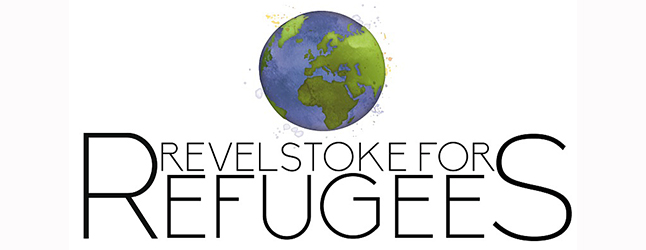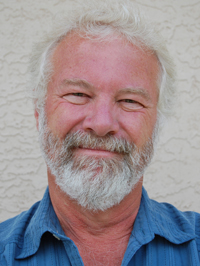

Current Publisher and Editor
Revelstokians have always known how to respond with compassion to the plight of foreigners in distress. We responded generously with money in the wake of the Indonesian and Japanese tsunamis and further back in time we sheltered refugees from Vietnam and Hungary.
The past efforts are mirrored today in the efforts of the Revelstoke for Refugees Committee, which wants to sponsor a family fleeing the terror in Syria.
The group is currently working to raise the $60,000 they deem necessary to fully support a family in Revelstoke for one year. Committee Chairwoman Rana Nelson rewcently spoke with EZ Rock’s Shaun Aquiline about its goals. You can activate an audio player at he end of this story to hear the interview.
That our friends and neighbours are stepping up to help people in real need speaks volumes about our community. But then that’s who we are, isn’t it? We support local people in need and we can do what we can to assist families trying to escape horrors we are fortunate enough to have never experienced in Canada.
Our nation has always responded to needs of people seeking refuge. Here is, with reference to The Canadian Encyclopedia, a partial list of groups who have found sanctuary in Canada:
1775 – 1783 — 40,000 to 50,000 United Empire Loyalists fled to Canada from the revolutionary war in what is now the United States;
1776 – 1800 — 2,000 Swiss Mennonites fled persecution in Europe for Canada;
1820 — thousands of Quakers fled religious persecution in England;
1835 — 1847 — Irish families streamed of out of Ireland to escape English oppression and the Potato Famine;
1860 – 1865 —30,000 black Americans escaping slavery in the US came here along the Underground Railroad. Most returned after the war but many stayed to help build Canada;
1870 — 7,000 Mennonites emigrated to Manitoba to escape Russian oppression;
1956 – 1957 — Hungarians flocked here after a failed uprising against their country’s brutal Communist dictatorship;
1966 —Czechs fled here after the failure of the Prague Spring in 1966;
1966 – 1975 — American war resisters crossed the border to escape conscription during the Vietnam War;
1972 — Asians fled here from Uganda;
1973 — Chileans and Argentinians came to Canada to escape the terror imposed by military dictatorships in those countries; and
1975 — 70,000 Vietnamese boat people came to Canada.
I’m going to halt this list in the late 1970s because that’s when national policies began to change. According to The Canadian Encyclopedia:
“A 1978 amendment to the Immigration Act made it possible for the first time for refugees to apply for admission as immigrants. Refugees had previously been permitted into Canada only by special orders-in-council. Their future admission would now depend less on Canada’s political and economic vagaries. Although the government has not determined its precise definition of a refugee, Canada has agreed to accept the comprehensive definition of the United Nations High Commissioner on Refugees (UNHCR). The Immigration Act (1976) refers to a refugee as one who “by reason of a well-founded fear of persecution for reasons of race, religion, nationality, membership in a particular social group or political opinion” is outside his own country and cannot, or fears to, return there.
“In 1986, as a recognition of its generous policies, Canada was awarded the coveted Nansen medal by the UNHCR. Ironically, within a year, because of a public outcry against the admission of increasing numbers of refugees — Sri Lankans, East Indians and especially Central Americans — and concerned over abuses of the system by bogus claimants, the Canadian government introduced tough legislation to restrict the flow of refugees into the country.”
That list above looks pretty good to most Canadians, but it does not include some of our country’s more shameful failures such as the exclusion policies used to limit immigration by Chinese, Japanese and Sikh populations. Nor does it list the shameful reluctance to deny entry to German Jews begging for admission to escape the Third Reich.
“Many nations suffering far worse economic distress than Canada were nonetheless much more receptive,” says The Canadian Encyclopedia. “While Canada grudgingly accepted some 4,000 of these refugees, the US welcomed 240,000, Britain 85,000, China 25,000, Argentina and Brazil over 25,000 each, and Mexico and Colombia received some 40,000 between them. But xenophobia and anti-Semitism permeated Canada, and there was little public support for, and much opposition to, the admission of refugees.”
Episodes like that are, thank God, no longer the norm in this country. And that the compassion have generally shown to others in need is the spirit that the Revelstoke for Refugees Committee is attempting to inspire.
Over the next four or five months The Current will be publishing a series of news stories, photos and 12 opinion columns about the committee’s efforts to bring a Syrian refugee family here to Revelstoke.
The series will begin on December 26 with a column by George Brodie. Other columns will appear on January 2 by Laura Stovel and Rana Nelson on January 16. I will write periodic news stories and other columns by Laura, George and Rana will touch on subjects such as how do you pick a family, what do they need, what kind of potential challenges and problems will they face, how we can make them welcome and more. The columns will appear roughly every two weeks.
I hope you enjoy this series and will support the Revelstoke for Refugees’ efforts. In the meanwhile, Revelstoke for Refugees Chairwoman Rana Nelson spoke recently with EZ Rock’s Shaun Aquiline. Please activate the audio player below to hear his interview with her:



